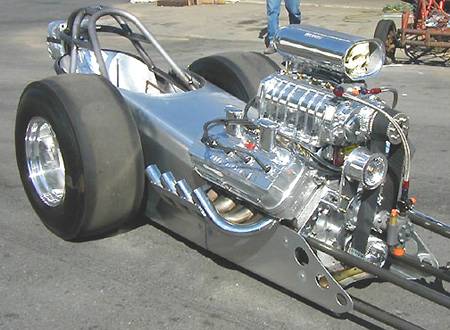This is my opinion - please feel free to correct it.
My opinion is the shorter the exhaust, the better. If no exhaust piping at all, or not using extractor at all - the better.
B-U-T, of course, if exhaust fumes come out from the 4 big holes on the block, oncoming wind will blow the fumes and our engines will be dirty as shit. Well, that is an aesthetic problem and will affect practicality.
Next problem is if there are 4 big holes on the block, sand, dirt, tikus, lipas all will come in. Still, that's not a performance problem, the same way as the open four throttle trumpet is not a performance problem. The problem is on day-to-day practicality.
Day-to-day practicality is what determines the law. That's the reason why we bother to put full exhaust piping across the length of our car - the law.
Now imagine if we remove 3" diameter exhaust piping so that there will be no exhaust piping at all. That will be a change from 3 inch to Infinite inch - because no piping means you're dumping the exhaust fumes straight to the atmosphere.
Is it better or worse?
Should be better lah, from performance view. From JPJ view, that's a different story. It'll sound horrible, it'll spit fumes everywhere, it'll be ugly, people around you will be angry, it'll have zero practicality but it'll also have zero restriction too.
So if no exhaust is better, why is oversized piping bad for performance?
My opinion is the shorter the exhaust, the better. If no exhaust piping at all, or not using extractor at all - the better.
B-U-T, of course, if exhaust fumes come out from the 4 big holes on the block, oncoming wind will blow the fumes and our engines will be dirty as shit. Well, that is an aesthetic problem and will affect practicality.
Next problem is if there are 4 big holes on the block, sand, dirt, tikus, lipas all will come in. Still, that's not a performance problem, the same way as the open four throttle trumpet is not a performance problem. The problem is on day-to-day practicality.
Day-to-day practicality is what determines the law. That's the reason why we bother to put full exhaust piping across the length of our car - the law.
Now imagine if we remove 3" diameter exhaust piping so that there will be no exhaust piping at all. That will be a change from 3 inch to Infinite inch - because no piping means you're dumping the exhaust fumes straight to the atmosphere.
Is it better or worse?
Should be better lah, from performance view. From JPJ view, that's a different story. It'll sound horrible, it'll spit fumes everywhere, it'll be ugly, people around you will be angry, it'll have zero practicality but it'll also have zero restriction too.
So if no exhaust is better, why is oversized piping bad for performance?


 Great minds.. great minds.
Great minds.. great minds.






